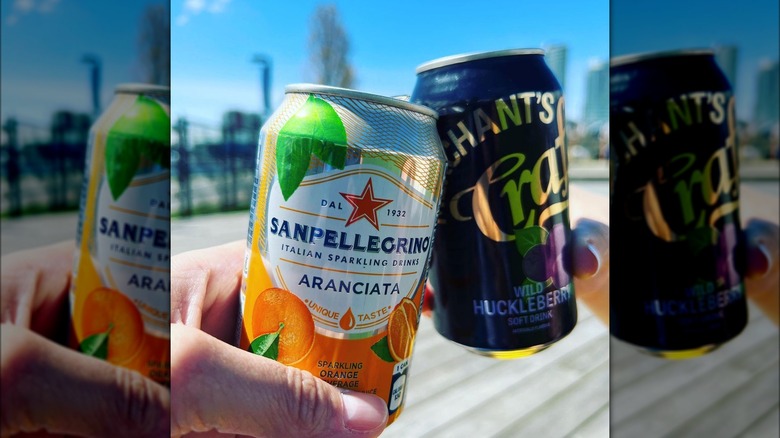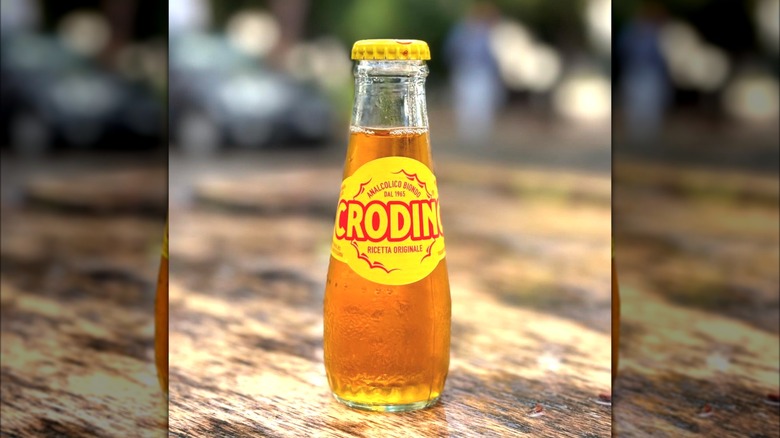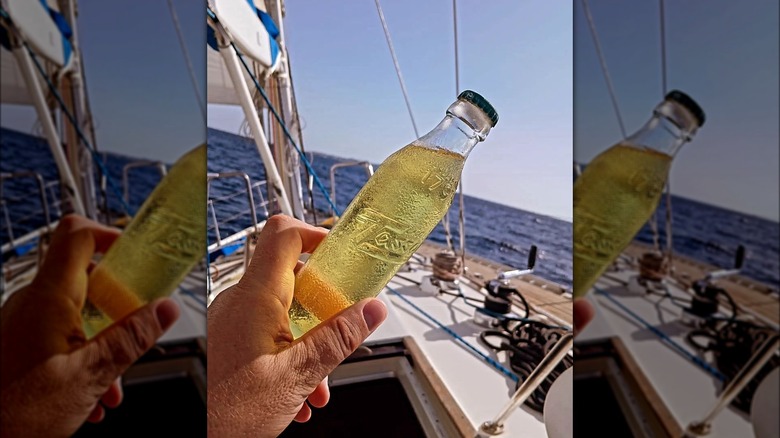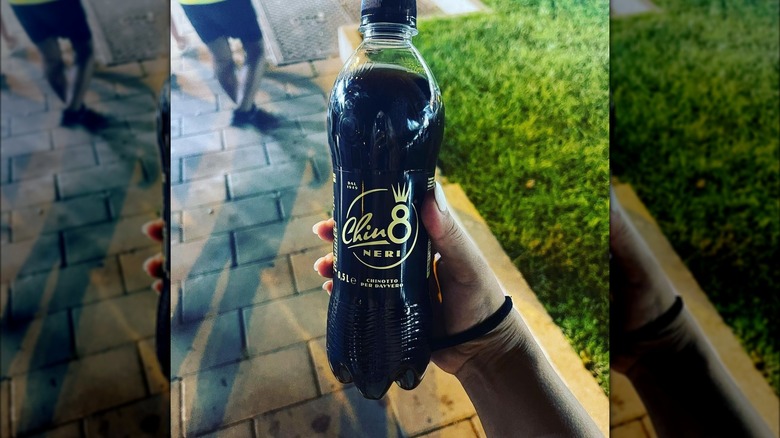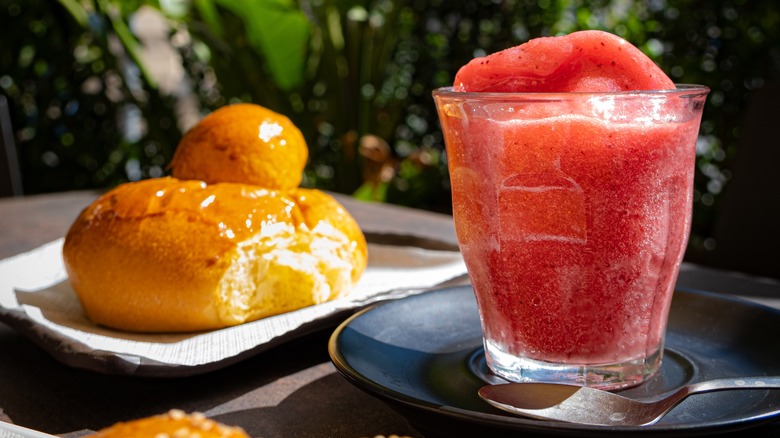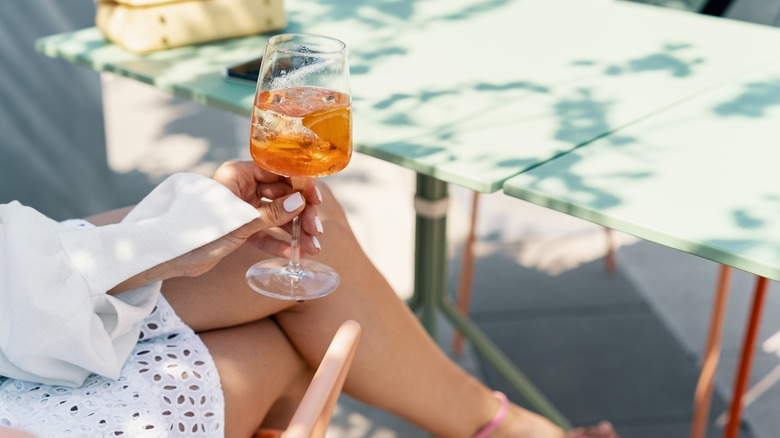The 5 Best Non-Alcoholic Drinks In Italy That Locals Swear By
Picture this: Golden beaches and rolling hills that stretch far as the eye can see, charming cobblestone streets, and the promise of mouthwatering flavors just waiting to be discovered around every corner. Welcome to the perfect Italian summer! From hidden beaches ideal for a secluded seaside escape to modern Italian cities with plenty of history and charm to explore, Italy has secured a spot in travelers' hearts as a top destination for all things sun, sea, culture, and cuisine.
However, pasta and gelato aside, Italy's reputation also precedes itself when it comes to beverages. After all, the country is well-known for everything from world-class wines — think Barbaresco, Chianti, and Lambrusco — to iconic cocktails like the Negroni and the Aperol Spritz, and a rich coffee culture that covers all the basics and doubles as a great way to combat jet lag after you've landed.
But what happens when neither alcohol nor coffee fits the bill or the occasion? Don't worry — Italy's got you covered there, too. From tangy citrus concoctions to locally-sourced herbal infusions, there's a whole world of nonalcoholic drinks waiting to be sipped. And after scouring travel blogs, online discussions, and recommendations from seasoned Italy enthusiasts (see our full methodology below), we compiled a list of some of the most popular and sought-after nonalcoholic options you can't miss during your next visit.
San Pellegrino
Kicking off our list of the best nonalcoholic drinks in Italy, we've got the tried and tested Sanpellegrino. Founded in 1899 in Bergamo, the brand's most famous product is their sparkling mineral water, which has made its way to tables and homes all over the world. However, beyond this classic, Sanpellegrino also has a wide selection of flavored beverages and mixers that cater to various tastes — from pomegranate and orange to prickly pear and orange, to classic lemon.
At the top of the list is the brand's aranciata — a local Fanta-type drink that's made with sparkling water, orange juice, and sugar that dates back to 1932. Best enjoyed cold — and with an orange slice garnish — aranciata is what sweltering afternoons by the beach are made for.
Alternatively, the brand also has a second, top-rated nonalcoholic option that packs a flavorful punch: Sanbittèr. Originally launched in 1961, the drink is similar to Campari. With hints of grapefruit and bitter orange, it's the perfect complement for a salty snack.
Crodino
Next on our list is Crodino, a popular nonalcoholic Italian aperitif that's been around since 1965. Known for its unique taste — and made with a combination of 15 herbs, spices, and roots — the amber-colored drink has become a go-to choice for pre-dinner drinks in Italy, thanks to its perfect balance of sweetness and bitterness that pairs well with everything from side dishes to cold cuts, and of course, cheese.
@issyhawkins_ We served aperol spritz as a drinks reception cocktail at my wedding, and found the delicious @Crodino Italia for the non drinkers. #soberbride #sober #soberlife #nonalcoholicdrink #crodino #aperol #sobriety #sobertwenties
In most cafes and bars, you'll generally see Crodino served over ice in a large goblet — often with an orange slice on top for some extra flavor. It's especially popular as a nonalcoholic alternative to the ever-popular Aperol Spritz, and most locals agree that it looks and tastes very similar to its boozy counterpart.
That said, whether you're in the mood for a pre-meal drink or you're craving a fancy alcohol-free option to cool down with as the sun begins to set, Crodino gives you a full taste of Italian aperitivo culture without the buzz.
Cedrata
Hailing from the sun-drenched coasts of Calabria, Cedrata is a zesty Italian soft drink that puts the spotlight on the ancient citron fruit. Refreshing and thirst-quenching, the beverage has long been a local favorite — especially during the hottest and most humid summer afternoons, when the heat feels as if it'll melt everything in sight.
So, what sets Cedrata apart from other sodas? It's made from the citron fruit, or "cedro" in Italian. This unique citrus fruit — characterized by a bumpy golden exterior — is often considered the grandfather of the citrus family. And while its outer skin might be bitter, the thick, spongy rind that makes up most of the fruit is surprisingly sweet — which ultimately gives Cedrata its distinctive flavor.
Nowadays, the top producer of Cedrata is Tassoni — they've been making the drink since the 1950s — and you're bound to run into the brand at pretty much every local restaurant or bar. Compared to other Italian sodas, it's less bitter than Chinotto (more on this one later) and not as sweet as Limonata, which makes it a refreshing middle ground. If you want to go all out, ask your server for a Cedrata Long Mocktail — made using lime, mint, and sugar along with the drink — and thank us later.
Chinotto
Coming in fourth, Chinotto is a unique soft drink that's been popular in Italy since at least the 1950s. Dark and carbonated, the beverage gets its distinct flavor from the chinotto fruit — a small and bitter citrus native to Italy that looks like a tiny orange.
The taste of Chinotto is often described as complex and bittersweet, with hints of herbs and citrus that round up the flavor profile for a unique taste. That said, while the drink might look similar to cola — some even believe it was the country's own attempt at rivaling Coca-Cola — locals argue that it's much more complex and less sweet. This ultimately makes it an acquired taste, even for Italians.
@localaromas My favorite non-alcoholic drinks in Italy #noalcohol #chinotto #lurisia
Chinotto is usually served chilled and over ice (lemon garnish optional), with a side of anchovies or Italian-style fried seafood, and as a go-to choice for people who want something refreshing that isn't a sugar-packed soda. Along with that, plenty of Italians also enjoy it after meals, as they believe it helps with digestion.
Granita
Rounding out our list of Italian nonalcoholic beverages — although this one's considered more of a frozen dessert — is the beloved granita. This icy treat, originally from Sicily, is a refreshing blend of shaved ice and flavoring that's perfect for beating the heat of an Italian summer.
Unlike the smoother texture of gelato or sorbet, granita has a coarser, more crystal-like consistency. It's typically made by freezing a mixture of water, sugar, and various flavorings, and then scraping these together to create a slushy texture. While the most popular granita flavors include lemon, almond, strawberry, mulberry, and coffee, you can find a wide variety of options depending on the region and season.
In Sicily, it's not uncommon to see locals starting their day with a breakfast of granita and brioche — especially, again, during the summer. That said, whether you're exploring the streets of Palermo or relaxing on a beach in Taormina, a cup of granita is an all-around delicious way to cool things down a notch.
Our ranking methodology
Narrowing down the list of nonalcoholic drinks wasn't easy, especially considering Italy's wide array of beverage options. That said, in order to choose these five standout drinks, we looked through travel blogs, Reddit threads, and even TikTok to find some of the most-named beverages and brands. Guided by these initial recommendations, we also put together a running list where we could tally up the number of times we saw a brand, type of drink, or specific flavor recommended. From there, we then worked to either group various drinks into one category (like in the case of Sanpellegrino) or let them shine on their own.

